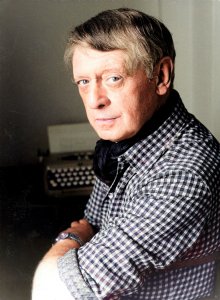Overview
Anthony Burgess shapes Napoleon Bonaparte’s life as a symphony, four movements corresponding to the architecture and mood of Beethoven’s Eroica. The novel compresses biography into orchestral form: themes introduced, developed, recapitulated, and transformed, with comic riffs, erotic bravura, and sudden dissonances. Burgess’s Napoleon is both self-invented hero and consummate actor, a strategist who conducts Europe as if it were an orchestra, while history keeps supplying counterpoint and discord. Politics, sex, and myth-making interlace with a running meditation on art’s power to both celebrate and betray the idea of the “great man.”
First Movement: Allegro con brio
The brisk opening gathers its motifs on Corsica and in the artillery schools, then races through the Italian campaign where Napoleon discovers his genius for logistics, speed, and theatrical victory. He woos Josephine with impatient ardor and manipulates the press with bulletins as polished as fanfares. Egypt follows, pyramids, plague, Orientalist fantasy, and the calculating retreat that leaves explanations in his wake. Paris receives him as a prodigy; the coup of Brumaire is played like a well-timed crescendo. Burgess scores these episodes with clipped, martial rhythms and a quicksilver voice that jumps from soldier’s barracks to director’s salons, giving a sense of momentum and inevitability while letting vanity, appetite, and calculation flash in passing grace notes.
Second Movement: Marcia funebre
A funeral march for republican ideals and the bodies history will exact. Napoleon consolidates rule as First Consul and then Emperor; Pius VII attends the coronation only for Napoleon to place the crown on his own head. The ceremony is a pageant of self-creation that tolls like a knell for the Revolution’s dreams. Victories add weight rather than lightness. Burgess dwells on the cost of glory, mass graves, widows, the bureaucratic neatness of death lists, while the hero convinces himself that order, code, and roads redeem the ledger. Josephine’s charm can no longer supply an heir; tenderness and ambition separate, and the marriage begins to die even as the Empire seems most alive. Beethoven’s thwarted dedication flickers at the edge of the text, a reminder that the artist who once hailed a liberator hears, beneath the drums, the dirge of tyranny.
Third Movement: Scherzo
Court life acquires a bouncing, ironic energy. Diplomats spar in epigrams; uniforms multiply like costumes in an opera buffa. Burgess revels in bedroom farce and political banter, Josephine’s lovers, Napoleon’s jealousies, the measured calculus that will end in divorce. The Concordat, the taming of tribunals, the bullying of monarchs: power strutted with comic flourish, its absurdities exposed by speed and repetition. Marriage to Marie-Louise and the birth of the King of Rome arrive with a triumphant skitter that cannot hide fragility. Europe, a dance floor arranged by fiat, begins to whirl too fast. What looked like control is revealed as choreography no conductor can sustain.
Finale: Variations
The Russian campaign becomes a set of stark variations: on hunger, on snow, on the ragged diminuendo of the Grand Armée. Moscow burns; the retreat erases earlier fanfares note by note. Leipzig, abdication, Elba, each episode revisits and warps earlier themes, as if the symphony were arguing with itself. The Hundred Days flare up in a defiant reprise, a bold restatement that collapses at Waterloo, where timing, weather, and human limits conspire against the virtuoso. On St. Helena the tempo slows to spoken recollection. Napoleon dictates his legend, edits his own score, and hears the distant echo of the symphony that once bore his name. Burgess closes with a portrait of a man who made Europe his instrument and ends with only voice, memory, and the awareness that art converts power’s noise into something enduring and ambiguous.
Style and Concerns
Language swings from barracks slang to ceremonial rhetoric; scenes shift like modulations, with motifs, glory, appetite, forgery of the past, recurring in altered keys. Burgess treats heroism as performance, empire as narrative, and history as a composition written by many hands. The result is a life-story scored for orchestra and soloist, triumphant and tragic, where the music outlasts the man even as it questions him.
Napoleon Symphony: A Novel in Four Movements
Experimental novel that structures the life of Napoleon Bonaparte around the form of a symphony in four movements, blending historical episode, pastiche and musical structuring.
Author: Anthony Burgess
 Anthony Burgess, renowned British novelist and author of A Clockwork Orange, celebrated for his literary prowess.
Anthony Burgess, renowned British novelist and author of A Clockwork Orange, celebrated for his literary prowess.
More about Anthony Burgess
 Anthony Burgess, renowned British novelist and author of A Clockwork Orange, celebrated for his literary prowess.
Anthony Burgess, renowned British novelist and author of A Clockwork Orange, celebrated for his literary prowess.